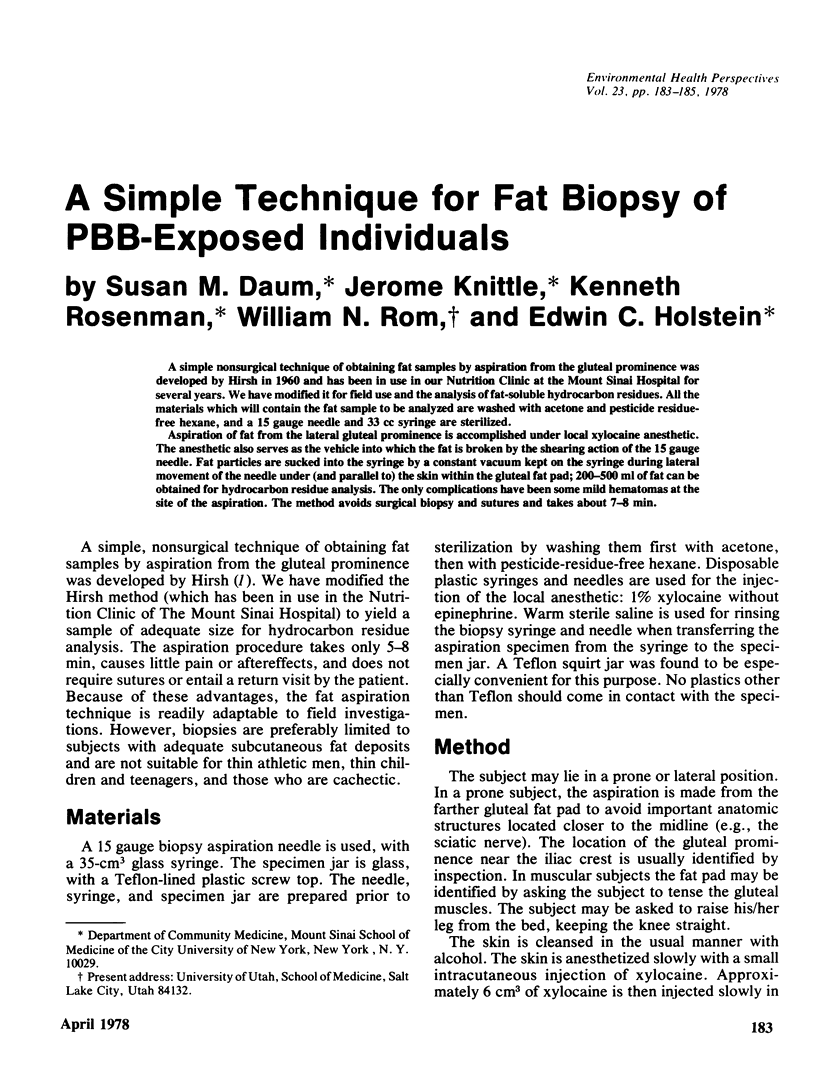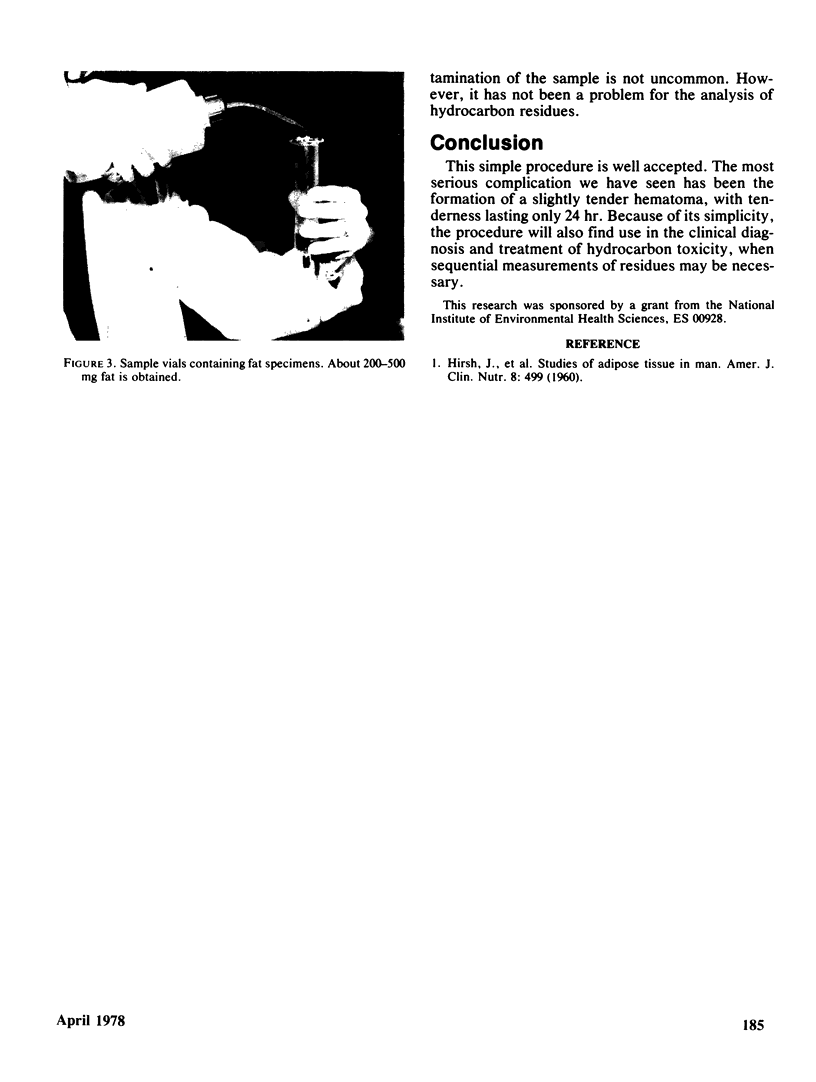Abstract
A simple nonsurgical technique of obtaining fat samples by aspiration from the gluteal prominence was developed by Hirsh in 1960 and has been in use in our Nutrition Clinic at the Mount Sinai Hospital for several years. We have modified it for field use and the analysis of fat-soluble hydrocarbon residues. All the materials which will contain the fat sample to be analyzed are washed with acetone and pesticide residue-free hexane, and a 15 gauge needle and 33 cc syringe are sterilized. Aspiration of fat from the lateral gluteal prominence is accomplished under local xylocaine anesthetic. The anesthetic also serves as the vehicle into which the fat is broken by the shearing action of the 15 gauge needle. Fat particles are sucked into the syringe by a constant vacuum kept on the syringe during lateral movement of the needle under (and parallel to) the skin within the gluteal fat pad; 200--500 ml of fat can be obtained for hydrocarbon residue analysis. The only complications have been some mild hematomas at the site of the aspiration. The method avoids surgical biopsy and sutures and takes about 7--8 min.
Full text
PDF








